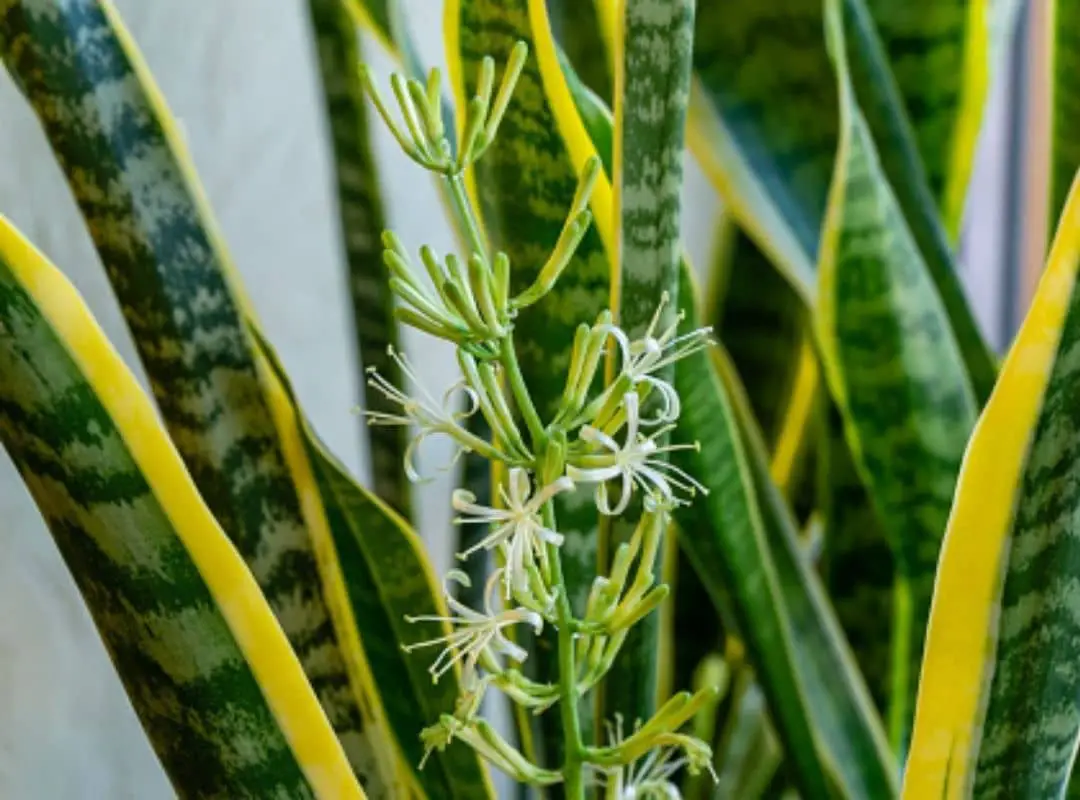
Source succulentthrive.com
Welcome to our comprehensive guide on snake plant growing flowers! Snake plants, scientifically known as Sansevieria, are popular houseplants known for their beautiful foliage. While they are mainly appreciated for their striking leaves, snake plants can actually produce lovely flowers under the right conditions. In this article, we will explore various aspects of snake plants and discuss how you can encourage them to bloom.
If you’ve always wondered about getting your snake plant to flower or if you’re simply interested in learning more about these fascinating plants, keep reading. We’ll share tips, techniques, and insights to help you successfully grow and enjoy the flowers of your snake plant.
1. The Beauty of Snake Plant Flowers
Understanding Snake Plant Flowers
Snake plant flowers are small, delicate, and typically white or cream-colored. They grow on long stalks that emerge from the base of the plant’s leaves. These flowers exhibit a pleasant fragrance and add a lovely touch to the overall aesthetics of the snake plant.
While snake plants are primarily grown for their foliage, the appearance of flowers is an exciting and rewarding event for plant enthusiasts. It signifies the healthy growth and proper care of the plant, further enhancing its appeal.
Conditions for Flowering
For snake plants to produce flowers, they require specific environmental conditions. Adequate lighting, appropriate temperatures, and proper watering play vital roles in stimulating flowering in snake plants.
Snake plants thrive in medium to bright indirect light. Placing them near a window with filtered sunlight is ideal. Temperature-wise, they prefer a range between 70°F and 90°F (21°C to 32°C) during the day and slightly cooler temperatures at night.
Regarding watering, it’s essential to strike a balance. Overwatering can lead to root rot, while underwatering can hinder flower production. Aim to keep the soil slightly moist but not overly saturated. Well-draining soil and pots with drainage holes promote healthy root growth and flower development.
2. Tips for Encouraging Snake Plant Flowers
Providing Optimal Lighting Conditions
As mentioned earlier, snake plants require medium to bright indirect light to flourish. Place your plant near a bright, preferably south-facing window where it can receive several hours of natural light. Avoid exposing it to direct sunlight for extended periods as it can scorch the leaves and hinder flower production.
If you don’t have access to sufficient natural light, you can supplement it with artificial light sources such as fluorescent or LED grow lights. Position the lights a few feet above the plant and provide 12-14 hours of light each day.
Selecting the Right Pot and Soil
The choice of pot and soil significantly impacts the overall health and flowering ability of your snake plant. Opt for a pot with drainage holes to prevent waterlogging, which can lead to root rot. Well-draining soil allows excess water to escape, ensuring healthy root development.
A suitable potting mix for snake plants consists of a blend of cactus or succulent soil mixed with perlite or coarse sand. This mixture provides excellent drainage while retaining enough moisture for the plant’s needs.
Proper Watering Techniques
Watering snake plants correctly is crucial for their overall well-being and flower production. Avoid overwatering, as snake plants are susceptible to root rot and fungal diseases. Allow the soil to dry out slightly between waterings and ensure proper drainage.
A simple watering technique involves thoroughly drenching the soil and letting excess water drain out completely. Then, wait for the top couple of inches of soil to dry before watering again.
3. Table Breakdown of Snake Plant Flowering Factors
Below is a detailed breakdown of the various factors influencing snake plant flowering, along with their descriptions and importance:
| Factor | Description | Importance |
|---|---|---|
| Lighting | Provides energy for photosynthesis and triggers flower production | High |
| Temperature | Affects plant metabolism and flowering induction | Medium |
| Watering | Impacts root health, nutrient absorption, and flower development | High |
| Pot and Soil | Influences root growth, water retention, and drainage | High |
Frequently Asked Questions about Snake Plant Growing Flowers
Q: How long does it take for a snake plant to flower?
A: Snake plants typically take several years to mature and produce flowers. Depending on the growing conditions and care, you can expect your snake plant to begin flowering after 3-5 years.
Q: Are snake plant flowers toxic to pets?
A: While snake plant foliage is mildly toxic to pets, the flowers themselves are not known to be toxic. However, it’s always advisable to keep plants out of reach of curious pets to prevent ingestion of any plant parts.
Q: Do snake plants need fertilization to flower?
A: Snake plants are not heavy feeders. However, providing a balanced houseplant fertilizer during the growing season can enhance their flowering ability. Use a diluted fertilizer solution and follow the manufacturer’s instructions.
Conclusion
Growing snake plants that produce beautiful flowers adds a new dimension to your indoor greenery. By providing the right lighting, optimal potting conditions, and proper care, you can enjoy the sight and fragrance of these lovely blooms. Remember, patience is key, as snake plants take time to mature and start flowering. With the tips and information shared in this guide, you are well on your way to transforming your snake plant into a blooming masterpiece.